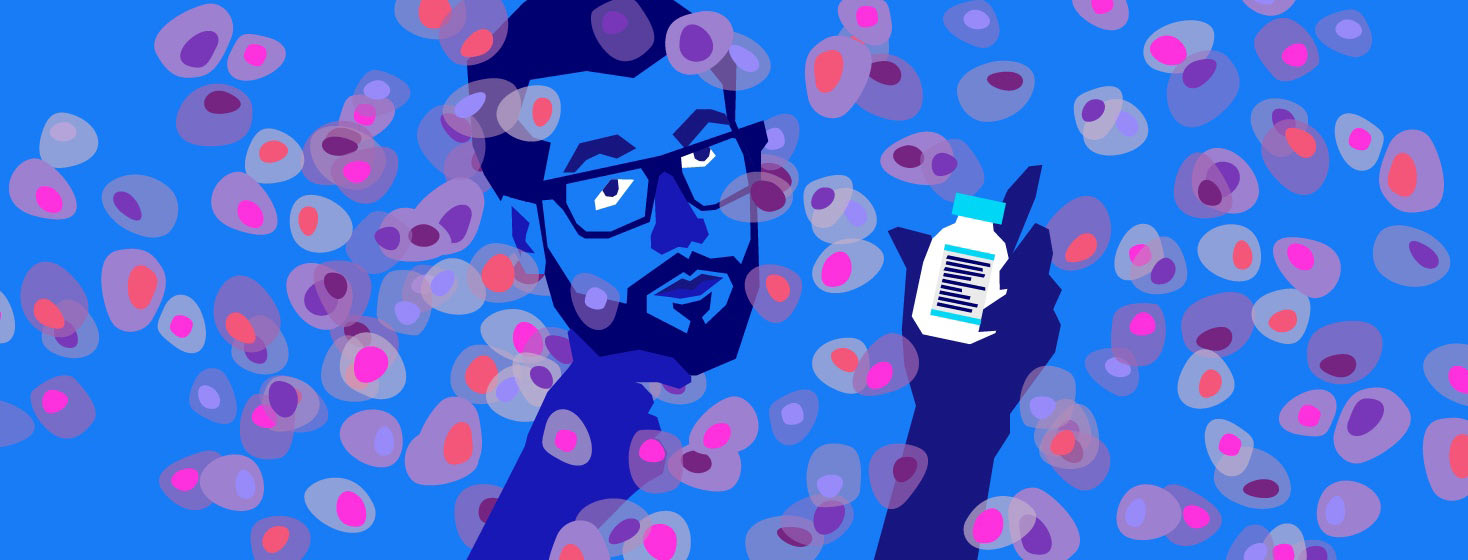Rituximab for Myasthenia Gravis
Rituximab is a drug used for various autoimmune conditions, one being myasthenia gravis (MG). Many people with MG see a response with immunosuppressants. However, about 10 percent of people with generalized MG do not respond to these drugs fully, or perhaps have side effects that warrant discontinuation.1 In cases like these, doctors may prescribe rituximab.
What is it?
Rituximab belongs to a family of drugs called monoclonal antibodies. It was the first drug approved within the monoclonal antibody family of drugs.2
Specifically, rituximab targets a protein called CD20. This protein is found on B cells, a type of white blood cell which is overactive in MG.3
When rituximab attaches itself to this protein, it creates a cascade reaction leading to the destruction of the B cell.3 Essentially, it works by reducing the overactive immune system.
How effective is rituximab for MG?
While rituximab wasn’t developed specifically for MG, there are some studies that show the potential benefit of this drug in managing MG.
Some of these studies show that rituximab may be associated with fewer side effects compared to other immunosuppressants. Rituximab may require the use of other drugs such as corticosteroids. It also may lead to a shorter time to remission.
How is it taken?
Rituximab is given intravenously, meaning that it requires administration into the vein by a trained medical professional.5 The frequency of administration depends on your case of MG.
Some people get infusions once a week, while some others go once a month. Some people stay on the drug as a maintenance therapy, while others may be on it for only a few months.5
What are the potential side effects of rituximab for MG?
Before you start treatment with rituximab, your doctor will likely outline potential side effects. Not everyone experiences all side effects to the same magnitude.
When starting a new drug, I usually recommend patients be aware of all potential side effects so they can recognize that there may be a connection with their symptoms to their newly initiated medication.
Here are some of the potential side effects, including the associated percentage of people who may experience them, include:5
- Increased blood pressure: 6-12 percent
- Swelling of the lower legs and hands: 8-16 percent
- Skin flushing: 5-14 percent
- Itchiness/rash: up to 17 percent
- Weight gain: 11 percent
- Infections: 16-62 percent
Note that this list is not exhaustive. For a full list, your pharmacist can provide you with a product sheet. Talk to your doctor about any side effects you may be experiencing during treatment with rituximab.
Drug interactions
There are drug interactions associated with rituximab. Because rituximab is not usually dispensed by pharmacies like regular drugs, I recommend you inform your home pharmacy that you are on this drug so that they can monitor for drug interactions.
In addition, there are some over-the-counter products and herbal medicines that have the potential to interact with rituximab.
For example, echinacea, commonly touted to help prevent colds, can reduce the effectiveness of rituximab.6 For that reason, it is recommended to avoid the combined use of rituximab with echinacea.
Have you used rituximab to treat your MG? Share your experiences below!

Join the conversation